The R&D team at Glaxon rarely disappoints. These guys are absolutely on top of supplement research, steadfastly taking the industry's game to the next level by creatively applying new or slept-on ingredients.
Put simply, there's methodology behind their formulas that we think is unsurpassed. Their Specimen Pre-Workout series has gone through several iterations now. If you're curious to see how it's evolved over the years, check out our blog posts:
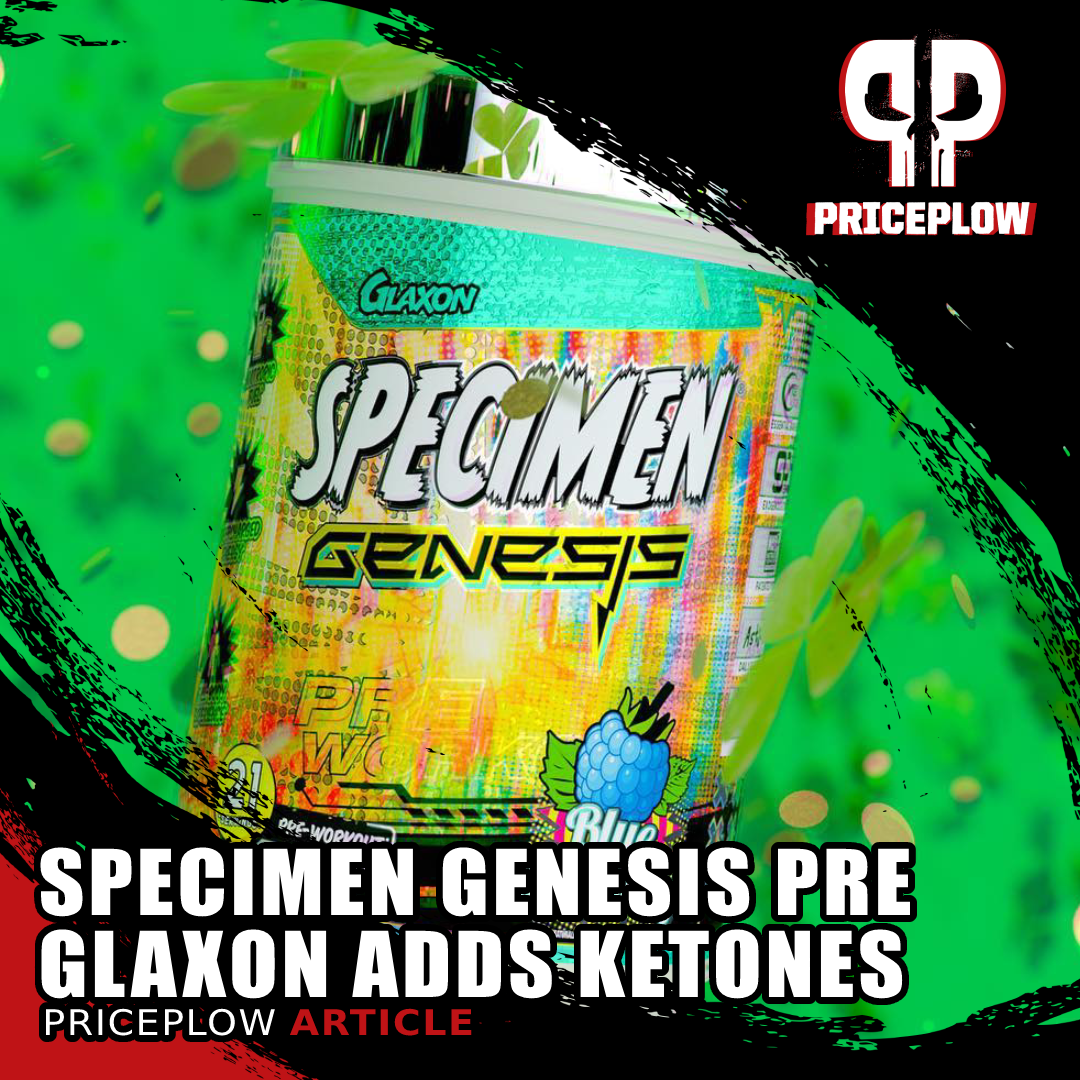
The next evolution of Glaxon's Specimen Series of pre-workouts is here, and it's a ketone powered version in the form of Specimen Genesis
- Glaxon Specimen: Revolutionary Pre-Workout Lets You Choose Yohimbe
- Glaxon Specimen G.F.Y: A Pre Workout Strong Enough for Wild Retailers
But launched on St. Patrick's Day 2023 next to the third version of Plasm Surge (Glaxon's stimulant-free counterpart), the next evolution of the stim-based Specimen series is upon us:
Introducing: Glaxon Specimen Genesis
Today we're talking about the latest reinvention of Specimen – Glaxon Specimen Genesis.
No doubt, this new formula will show itself to be improved as well. But will this be the final form of Specimen? Who knows! Probably not. Glaxon is not a company that rests on their laurels.
But this one does include something that Glaxon wanted all the way back in their original V1 launches in 2019/2020: exogenous ketones. Let's get into how it works, but first, check the PricePlow news and deals:
Glaxon Specimen Genesis – Deals and Price Drop Alerts
Get Price Alerts
No spam, no scams.
Disclosure: PricePlow relies on pricing from stores with which we have a business relationship. We work hard to keep pricing current, but you may find a better offer.
Posts are sponsored in part by the retailers and/or brands listed on this page.
This area is reserved for Team PricePlow's upcoming videos.
Subscribe to our channel and sign up for notifications so you catch it when it goes live!
Glaxon Specimen Genesis Ingredients
In a single 2-scoop (15 gram) serving of Specimen Genesis from Glaxon, you get the following:
-
Beta-Alanine – 3,200 mg
Beta-alanine is an ergogenic aid (defined as any substance or technique that enhances athletic performance) that's one of the longest-running standard pre-workout ingredients in the history of the supplement industry.
It works to increase athletic endurance by combining with an amino acid called L-histidine to produce carnosine.
Carnosine is a dipeptide that can be found at high concentrations in muscle tissue. There, carnosine works to help your body get rid of lactic acid (also known as lactate), a metabolic waste product that progressively worsens muscular fatigue as it accumulates during intense exercise.[1]
By reducing the amount of lactate in your muscles through beta-alanine supplementation, you can delay or even (depending on the level of intensity at which you're exercising) prevent the onset of anaerobic fatigue.
This naturally leads to better endurance.
If carnosine is what we're after, why don't we supplement with carnosine directly? The answer is that carnosine's oral bioavailability is poor, so taking it by mouth won't do much.
Carnosine helps your body flush lactic acid out of the muscles. Beta alanine helps you get more muscle carnosine content.
Beta-alanine, on the other hand, is significantly bioavailable – and since the body's supply of beta-alanine almost always holds up carnosine production,[2,3] giving it more is a reliable method for increasing carnosine production.
Two meta-analyses looking at over 40 peer-reviewed beta-alanine studies concluded that it's best at increasing endurance during exercise sessions conducted at a particular level of intensity. That intensity refers to what you can sustain for anywhere from 30 seconds to 10 minutes.[1-8]
The 3,200-milligram dose is well-studied, well-tolerated, and has repeatedly been found efficacious in the research literature.
Beta-alanine tingles
The safety profile of beta-alanine is excellent. However, most people experience a tingling sensation in their upper body when taking it. This can definitely feel weird, but it's no cause for concern: Researchers have concluded that these tingles are harmless.[9]
When we see beta-alanine first, we can usually be sure that it's a citrulline-free formula -- and that's the case here. So what does Glaxon use to generate nitric oxide pumps? See next:
-
Betaine Nitrate (as NO3-T) – 2,000 mg
Betaine nitrate is simply betaine combined with nitrate. So, let's talk about the benefits of each.
Nitrate for nitric oxide (NO) boosting and vasodilation (pumps)
After you ingest nitrates, they go through the following conversion pathway:[10-12]
nitrate → nitrite → nitric oxide (NO)Nitrates are converted into nitrite, which enters the bloodstream through intestinal walls, and is then converted into NO once it reaches salivary glands.[10-12]
So why do we want more NO? Lots of reasons, but the main one is that NO activates vasodilation, a mechanism that causes your arteries to expand in diameter. This allows the same volume of blood to flow through a bigger cross sectional area, thus reducing blood pressure and heart rate while leading to gains in athletic performance.
According to a 2013 meta-analysis[13] on nitrate supplementation, it can improve or increase:
- Circulation[14]
- Aerobic efficiency[14-17]
- Strength[18,19]
- Athletic endurance[16,17]
- Recovery from exercise[13]
- Cellular energy production[19-21]
Betaine – another ergogenic aid
To read about the benefits of the betaine side of betaine nitrate, scroll down to the betaine anhydrous section below. Betaine nitrate is ~35% nitrate by weight, meaning we have 1.3 grams of betaine and about 0.7 grams of nitrate. This will come in handy later.
-
D-Beta Hydroxybutyrate (Magnesium and Calcium Salts as goBHB) – 1,500 mg
D-Magnesium Beta Hydroxybutyrate and D-Calcium Beta Hydroxybutyrate are exogenous ketones. Ordinarily ketones are generated when your body metabolizes fat while in a state of ketosis.[22] – Here, we're taking them supplementally, providing an alternative energy source separate from glucose.
Importantly, Glaxon has opted to use only the right-handed isomers of these ketones, which is denoted by the D- prefix (as opposed to R- or L-). This is because the right-handed isomers are the most biologically active, which makes goBHB a better choice of ingredient than generic BHB blends that use a 50/50 D/R blend.
Peer-reviewed studies have found that taking supplement D-BHB significantly raises blood levels of the ketone beta-hydroxybutyrate.[23] Ultimately, this can increase your metabolic flexibility, leading to boosts in performance and endurance.[24]
Nootropic effects of BHB
Some studies have found that the ketones are actually the brain's preferred source of energy.[25,26] They're particularly effective in cases of energy rescue and insulin resistance.[25]
This is why ketone supplementation and ketogenic diets are increasingly being used to help manage neurodegenerative illnesses,[27-29] which some scientists call "type 3 diabetes",[30,31] thanks to the cerebral insulin resistance component that characterizes them.[32]
Beta Oxidation of fatty acids leading to Ketogenesis. D-BHB is the primary ketone made that the body can use as an energy substrate. We can add more D-BHB for various reasons, since this fat burning process is slower and you may wish to have some BHB available immediately for more energy.
Ketones can bypass the insulin bottleneck, thus rescuing neurons from death by energy insufficiency.
Elevated serum BHB is associated with a corresponding increase in brain derived neurotrophic factor (BDNF),[33] a molecule that's kind of like fertilizer for your brain in that it helps promote the growth of new neurons and neural networks.
Unsurprisingly, BHB has been shown by some research to be neuroprotective.[34]
In adults with memory impairment, increased BHB via dietary MCT oil has been shown to improve cognitive performance.[35]
The application of D-BHB can even increase lifespan in lower organisms like C. elegans.[36]
All of that is undeniably cool, but again, in the context of a pre-workout formula like Glaxon Specimen Genesis, the metabolic flexibility and potential associated performance benefits are really what we're after with D-BHB.
-
Betaine Anhydrous – 1,250 mg
Betaine, sometimes referred to by its chemical name trimethylglycine (TMG), is another ergogenic aid[37] in Specimen Genesis.
Much of its ergogenic effect can be attributed to its status as an osmolyte, which is a molecule that helps regulate the balance of water in the body's cells. Betaine does this by increasing the osmotic pressure around cells, thus forcing a higher than normal amount of water into them. The natural result of this is better hydrated cells,[38,39] which improves cellular access to nutrients, as well as resilience to heat stress.[40]
Betaine is also a methyl donor, a molecule that donates a methyl group (chemical formula -CH3) to another molecule. As methyl groups are consumed by various cellular processes, including DNA methylation, protein function, and energy metabolism, your body must have access to an adequate supply for peak mental and physical performance.
The body also uses methylation to regulate the amount of homocysteine in blood – if this methylating process is impaired by lack of methyl groups, homocysteine levels can get too high,[41] which statistically raises the risk of cardiovascular disease.[38,42]
A landmark 2013 study showed that 2.5 grams of betaine every day can have profound effects on body mass and strength[38]
Supplementation with betaine can thus be seen not only as a performance-boosting practice, but also an investment in your long-term cardiovascular health and overall athleticism.
Research shows that supplementing with betaine can significantly improve strength, power, athletic endurance, and even body composition.[43-48]
The dose adds up to over 2.5 grams betaine
The clinically-validated dose of betaine is 2.5 grams per day (some research goes higher). Here, we have 1.25 grams in the form of betaine anhydrous, but there's also ~1.3 grams of betaine coming from betaine nitrate, meaning Specimen Genesis provides over 2.5 grams of total betaine.
-
Astrolyte Electrolyte Blend (Fructooligosaccharides, Sodium Chloride, Potassium Citrate, Magnesium Citrate) – 1,100 mg
Astrolyte is Glaxon's in-house electrolyte blend that's used in many of their supplements, including Specimen, Specimen GFY, their nitric-oxide-boosting formula Plasm Surge, and even their sleep aid, Tranquility.
Astrolyte includes:
- Sodium chloride (salt) – key for muscle contractions and athletic performance[49,50]
- Potassium – good for cardiovascular health[51-54] and bone density[55,56]
- Magnesium – good for insulin sensitivity,[56-58] glycemic control,[56-58] and blood pressure[57,59-61]
These electrolyte minerals are an awesome addition to any pre-workout formula since we lose them in sweat during intense exercise and need to replenish them for optimal performance and recovery.
However, our favorite part of this ingredient is not a mineral – it's the fructooligosaccharides (FOS). These FOS are a special type of carbohydrate that actually increases mineral bioavailability, like sodium, potassium, and magnesium.[62-65] So, by combining it with electrolytes, Glaxon provides more bang for your buck.
The FOS also have a prebiotic effect,[66] meaning they can feed the good bacteria your gut needs to thrive.
Finally, Astrolyte is naturally sweet – about 0.3 to 0.6 times as sweet as sugar[67,68] – which helps improve the taste of Glaxon Specimen Genesis.
We actually wrote a whole article dedicated to this ingredient, which serves as its own hydration product, so if you want the full scoop, check out Glaxon Astrolyte: Hydrating Electrolytes That Do More.
-
Caffeine Anhydrous – 300 mg
Next up we have yet another powerful ergogenic aid in the form of caffeine.
Glaxon Astrolyte bring hydrating electrolytes in style. In this article, we dig deeper into the added mineral absorption ingredient, fructooloigosaccharides.
The vast majority of American adults consume some form of caffeine on a daily basis for its ability to fight fatigue, increase wakefulness, and promote psychomotor vigilance.
Caffeine fights fatigue by inhibiting adenosine receptors.[69] The reason this works is that adenosine, a byproduct of ATP hydrolysis, builds up in the brain while neurons consume energy during the waking state. The more adenosine available in the brain to activate the adenosine receptors, the more tired you feel. Caffeine prevents this from happening, not by decreasing the adenosine levels in the brain, but by preventing it from activating the receptor.
Adenosine downregulation leads to increased global brain activity,[69] which naturally leads to enhanced focus and motivation. So too does caffeine's ability to promote the action of dopamine, your brain's focus and motivation neurotransmitter.[70]
Ergogenic, pro-metabolic
Most of us know about and have experienced caffeine's anti-fatigue and nootropic properties.
Experience the power of mushrooms with SuperShroom from Glaxon, now updated with L-Ergothioneine!
What's discussed and understood less is caffeine's ability to boost metabolism. As it turns out, caffeine doesn't just give you more energy in a figurative sense – it increases the amount of literal energy your cells produce.
Caffeine does this by activating AMPK-activated protein kinase (AMPK), which increases the rate at which your body burns fat, thus making more energy in the form of adenosine triphosphate (ATP), available to your cells.[71,72]
Caffeine can also inhibit phosphodiesterase, an enzyme responsible for degrading cyclic adenosine monophosphate (cAMP).[71,72] This has the same effect – cAMP signals your cells to synthesize more ATP, leading to additional calories burned and a larger pool of cellular energy available to do useful work.[73]
All of this adds up to an ergogenic effect, and research shows that caffeine can improve strength, power, and endurance.[74]
-
Velvet Bean (Mucuna pruriens) [Seed] Extract – 250 mg
Mucuna pruriens, known colloquially as velvet bean, is jam-packed with antioxidants and the dopamine precursor, L-dopa.[75]
Velvet bean extracts are almost always standardized for L-dopa,[76] as supplemental L-dopa can increase dopamine production.[77] Dopamine is, again, your brain's focus and motivation neurotransmitter, so upregulating it is of obvious value in the context of a preworkout formula.
Mucuna extracts can also help reduce stress, as they have been shown to downregulate cortisol, the infamous stress hormone.[78-80] This makes Mucuna a great ingredient to combine with stimulants like caffeine, which tend to increase cortisol production. Importantly, this pairing gives you the upside of caffeine with less downside.
Keeping cortisol under control is of paramount importance since excessive cortisol can actually decrease testosterone levels, potentially compromising performance and recovery.[81,82]
The L-dopa in Mucuna can also increase your body's production of growth hormone,[83-85] which is highly anabolic.
Last but not least, Mucuna can help prevent prolactin levels from rising too high,[86] which is beneficial as prolactin tends to be elevated following exercise.
-
Choline L+Bitartrate (as VitaCholine) – 200 mg
The essential nutrient choline is required to build and maintain cellular membranes,[87] the phospholipid bilayer envelopes that enclose the contents of your cells.
In the central nervous system, choline is the precursor to acetylcholine, a neurotransmitter that we often refer to as the learning neurotransmitter because of the indispensable role it plays in learning and memory consolidation.[88]
See the brand's previous release, Glaxon Super Greens Pink Lady flavor
Upregulated acetylcholine improves performance in multiple dimensions of cognition, ranging from learning and memory to balance and coordination.[89,90] This can be beneficial for any workout that requires high levels of dexterity or hand-eye coordination.
Choline deficiency is not good. Besides the obvious cognitive dysfunction it can cause, it's also associated with non-alcoholic fatty liver disease, diabetes, and dyslipidemia.[91]
VitaCholine is 100% choline-L, the most bioavailable form of choline bitartrate. And there's a bit more choline coming as well:
-
CDP-Choline (Cytidine 5'-Diphosphocholine as Cognizin) – 100 mg
Next we have a little extra choline in the form of Cognizin citicoline CDP-choline.
So how does this differ from the VitaCholine? Research shows that citicoline is particularly good for improving certain dimensions of cognitive performance, including focus, attention, and mental energy.[92,93]
It's made up of choline and uridine, which synergize to improve cerebral blood flow and mitochondrial function.[94,95]
Citicoline is more or less the feel-good form of supplemental choline, thanks to its specific nootropic effects and ability to significantly upregulate dopamine,[96] in addition to the usual acetylcholine.
Overall, we've seen choline blends in Glaxon pre-workouts before - it's nice to have the formula opened up so we know exactly how much of each one we're getting.
-
English Ivy (Hedera helix) [Leaf] Extract – 100 mg
English ivy contains high levels of saponins and flavonoids,[97] both of which are associated with better fat metabolism[98] and body composition.[99]
In rats, Hedera extract has been found to protect against diabetes by reducing HbA1c and improving glycemic control.[100] This effect was so significant that researchers were able to see differences between the organ tissue structure of the Hedera rats compared to placebo rats.
Hedera can also benefit people with respiratory disease. Several peer-reviewed studies found that Hedera can open airways (bronchodilation).[101-103] In the context of a pre-workout formula, this can potentially support peak performance by making breathing easier.
-
Vitamin C (ascorbic acid) – 90 mg (100% DV)
It's famed for its antioxidant and anti-inflammatory effects, and there are about a million different things we could write about vitamin C, but we want to highlight two angles that are particularly important for a pre-workout formula, especially one with nitrates.
First, research has shown that vitamin C reduces nitrate tolerance.[104] This comes in handy since Specimen Genesis also includes betaine nitrate, discussed above, and the powerful antioxidant in vitamin C will help it work just as well from the tub's first scoop to its last.
The second angle is the role that vitamin C can play in reducing or preventing adrenal fatigue.
Believe it or not, your adrenal cortex – the gland responsible for producing stress hormones and some of your body's androgens — actually has one of the highest concentrations of vitamin C in your entire body.[105]
During a period of stress – such as an intense workout – your adrenal glands actually secrete vitamin C.[106] Over time, this opens the door to vitamin C deficiency and possible adrenal dysfunction.
Thus, if you're training hard, supplementing with a little C isn't a bad idea. We like seeing this moderate dose, which is enough to help cover requirements without wandering into megadose territory.
-
Magnesium (as magnesium citrate and D-betahydroxybutyrate) – 157 mg (37% DV)
We're glad to see a hefty dose of magnesium in Glaxon Specimen Genesis. After all, magnesium is an electrolyte mineral, meaning it's liable to be depleted during periods of stress or lost in sweat.
Magnesium deficiency is a growing public health concern, as the magnesium content of our food has been in steady decline for at least 100 years, thanks to the prevalence of certain agricultural practices.
Peer-reviewed studies show that fixing even a mild magnesium deficiency can improve:
- Blood pressure[107-110]
- HbA1c and blood glucose[107,111,112]
- Insulin production[107,111,113]
- Insulin sensitivity[107,111,112,114]
- Type 2 diabetes risk[115-117]
- Bone mineral density[118]
- PMS symptoms[119-122]
- Lactic acid disposal[123]
- Muscle gains[124]
- C-reactive protein level and effects[124,125]
- Systemic inflammation[124-126]
- Exercise-induced muscle damage[127]
- Migraine symptoms and frequency[128-130]
Magnesium is a true superstar supplement ingredient and we're happy to see it in pretty much any formula.
-
Other ingredients
Finally, Glaxon Specimen Genesis has some other ingredients for supporting metabolism through intense physical stress, including hefty doses of water-soluble B vitamins that act as energy production cofactors and trace electrolyte mineral support. These can help keep your energy levels up during workouts, as well as support recovery afterwards.
We like seeing methylcobalamin B12 used instead of cyanocobalamin, as the methylated form is significantly more bioavailable and can donate methyl groups to various metabolic processes (much like betaine).
- Vitamin B2 (as riboflavin) – 10 mg (769% DV)
- Vitamin B3 (as nicotinic acid) – 40 mg (250% DV)
- Vitamin B6 (as Pyridoxal-5'-Phosphate) – 5 mg (294% DV)
- Vitamin B12 (as methylcobalamin) – 200 mcg (8,333% DV)
- Calcium (from the D-BHB) – 214 mg (16% DV)
- Chloride – 182 mg (8% DV)
- Sodium – 120 mg (5%)
- Potassium – 96 mg (2%)
Flavors Available
Conclusion: The Genesis of Glaxon's Next Pre-Workout
Glaxon Specimen Genesis mostly sticks to tried-and-true, heavy-hitter pre-workout ingredients like beta-alanine, betaine, and caffeine. And they're all generously dosed.
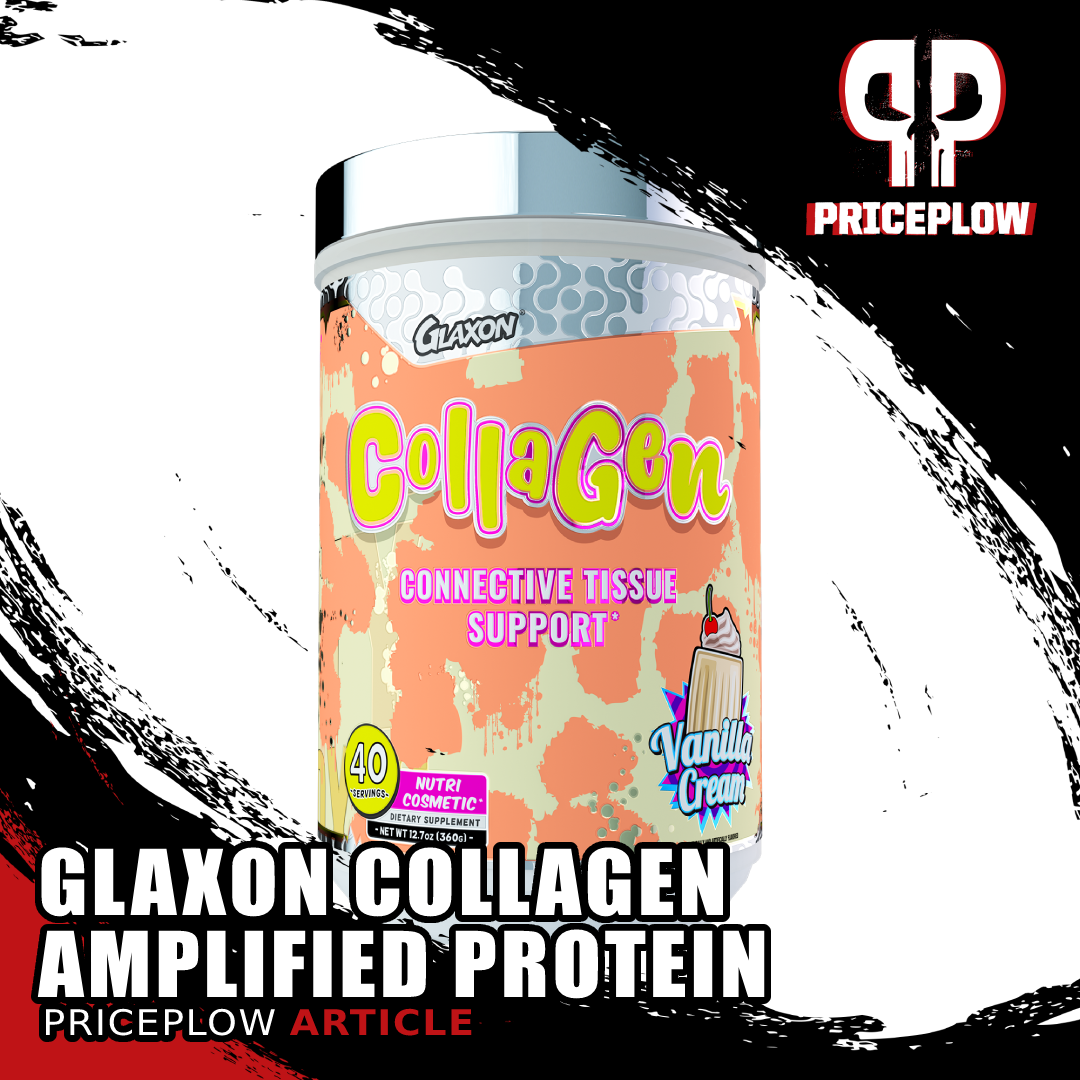
With the new-and-improved Glaxon Collagen formula, Glaxon takes collagen supplementation to the next level with ingredients like MFGM and hyaluronic acid.
But it wouldn't be a Glaxon product without the company bringing some innovative and forward-looking flair to the formula selection, and that's where nootropic ingredients like Mucuna and choline come in – as well as English ivy, which is a Glaxon favorite. In fact, we rarely see anyone else use it.
As the nootropic stack in Glaxon Specimen Genesis can upregulate dopamine, acetylcholine, and BDNF—and also improve cerebral blood flow— these ingredients will get you focused, motivated, and happy during your time in the gym, which any serious gym goer can tell you is crucial for long-term athletic success.
We also love the Astrolyte electrolyte blend – this is a Glaxon ingredient that seems to fit in pretty much anywhere.
But the real show-stopper here is the big dose of D-BHB. Very few pre-workout formulas include exogenous ketones. We think the metabolic flexibility afforded by this ingredient will give even the veteran supplement consumer a new experience in the gym, even if it's subtle.
Next up: our updates to Plasm Surge, whose V3 launch came alongside Specimen Genesis!
Glaxon Specimen Genesis – Deals and Price Drop Alerts
Get Price Alerts
No spam, no scams.
Disclosure: PricePlow relies on pricing from stores with which we have a business relationship. We work hard to keep pricing current, but you may find a better offer.
Posts are sponsored in part by the retailers and/or brands listed on this page.
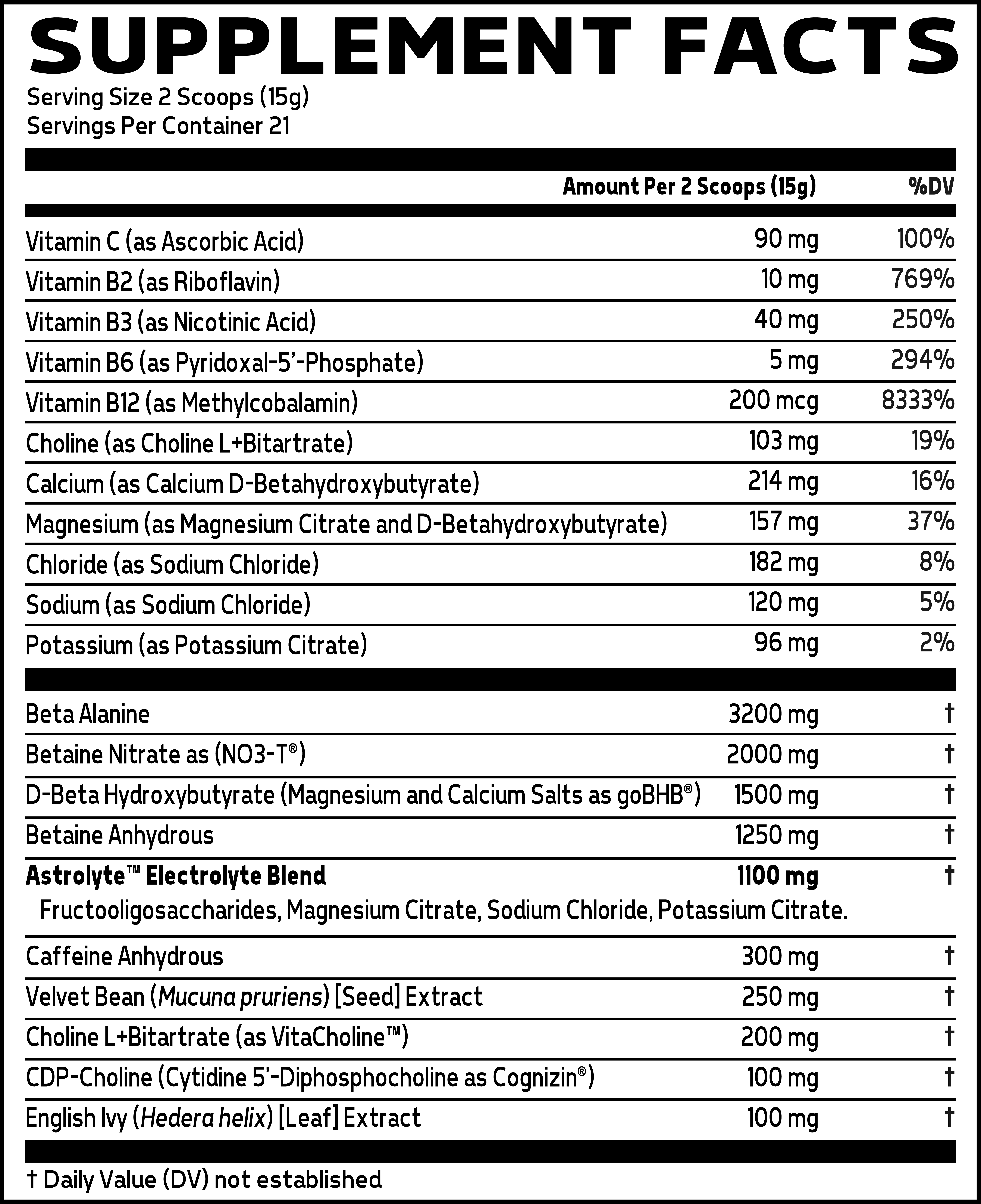
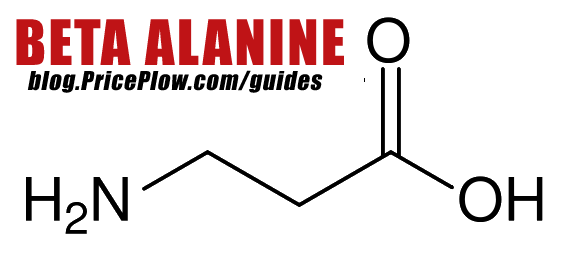

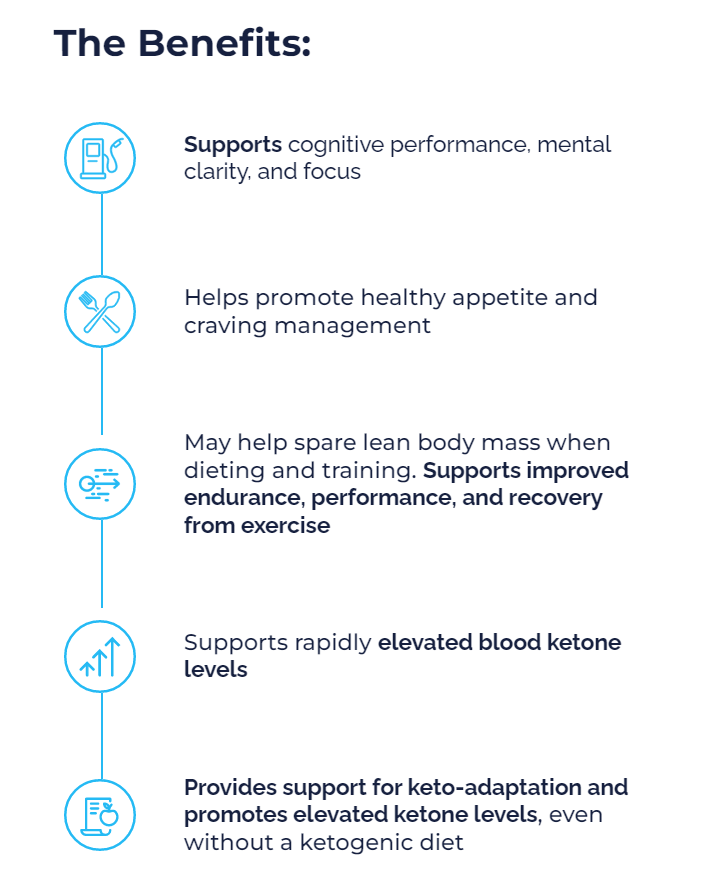
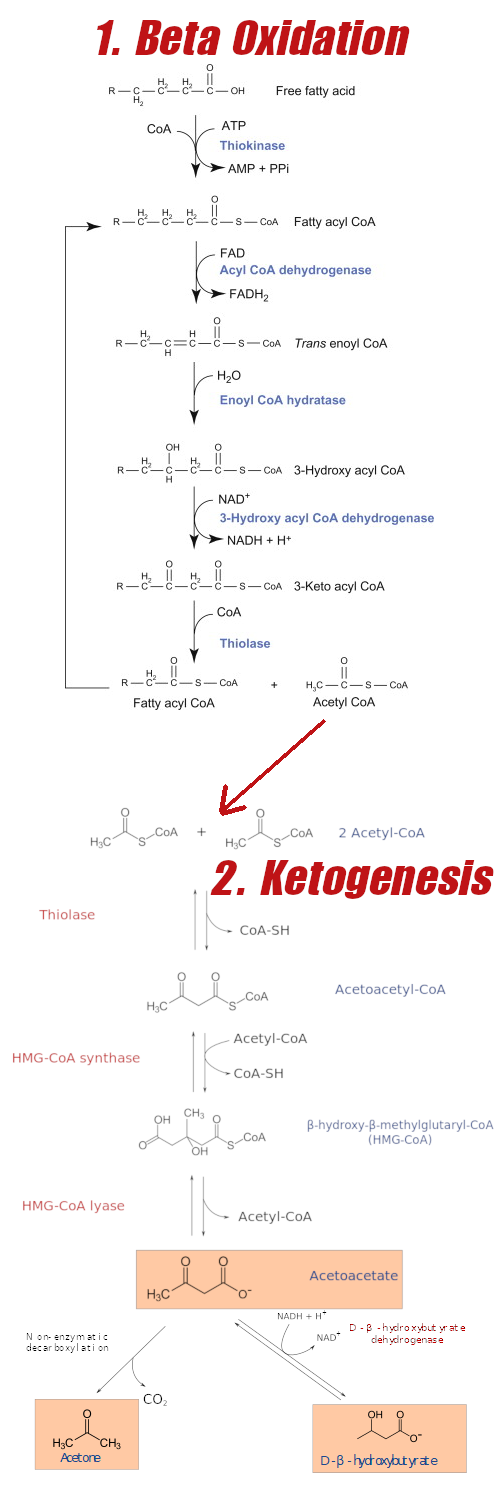

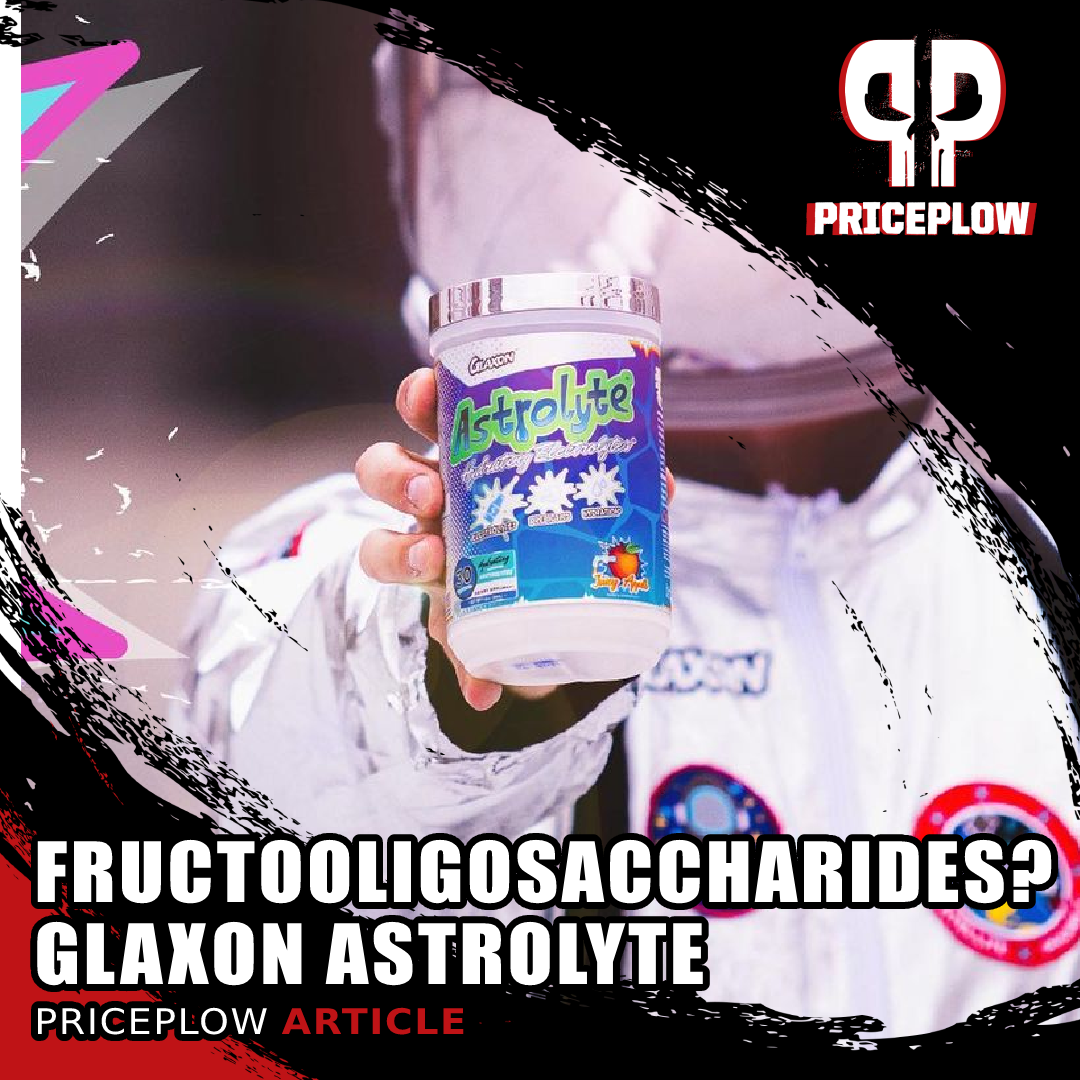
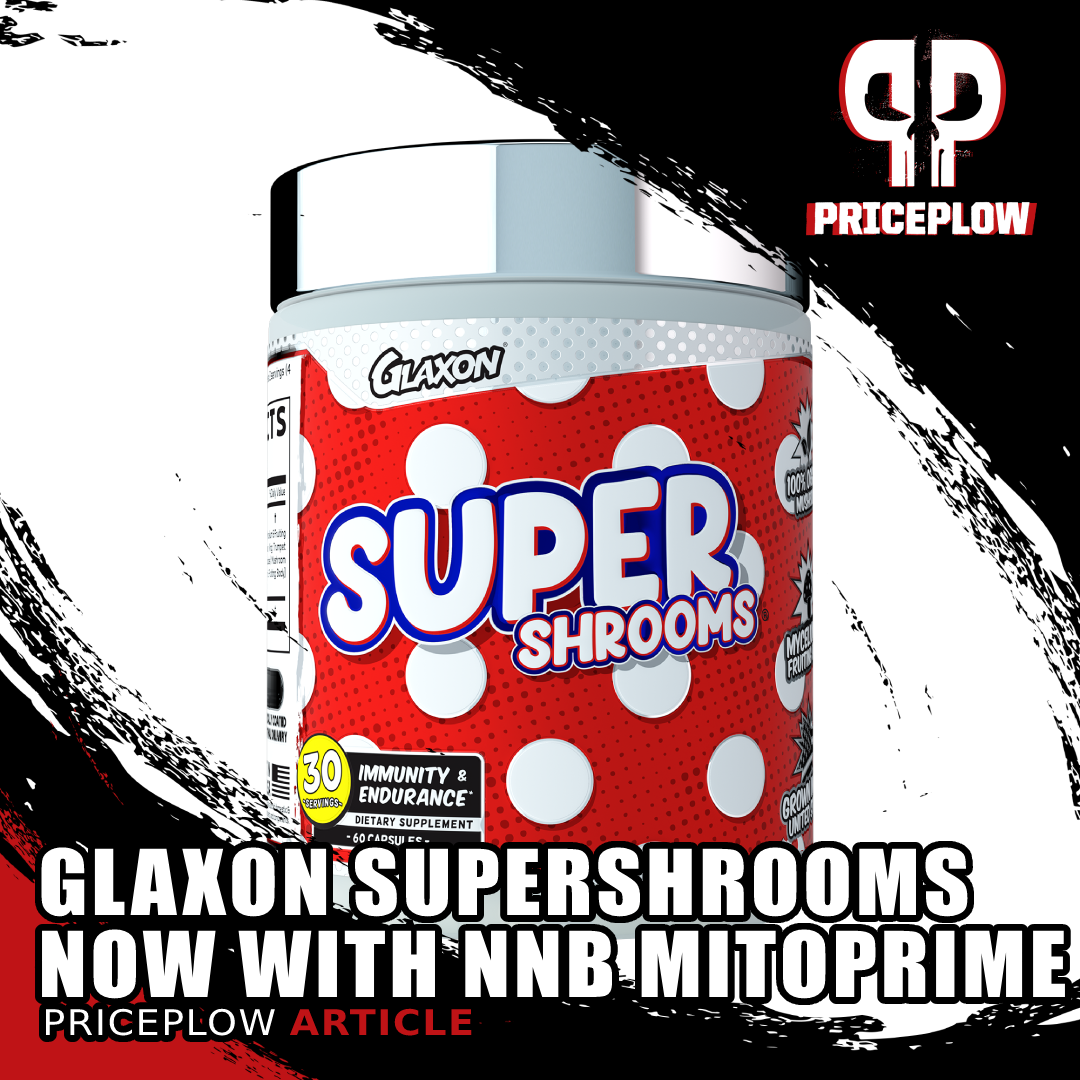
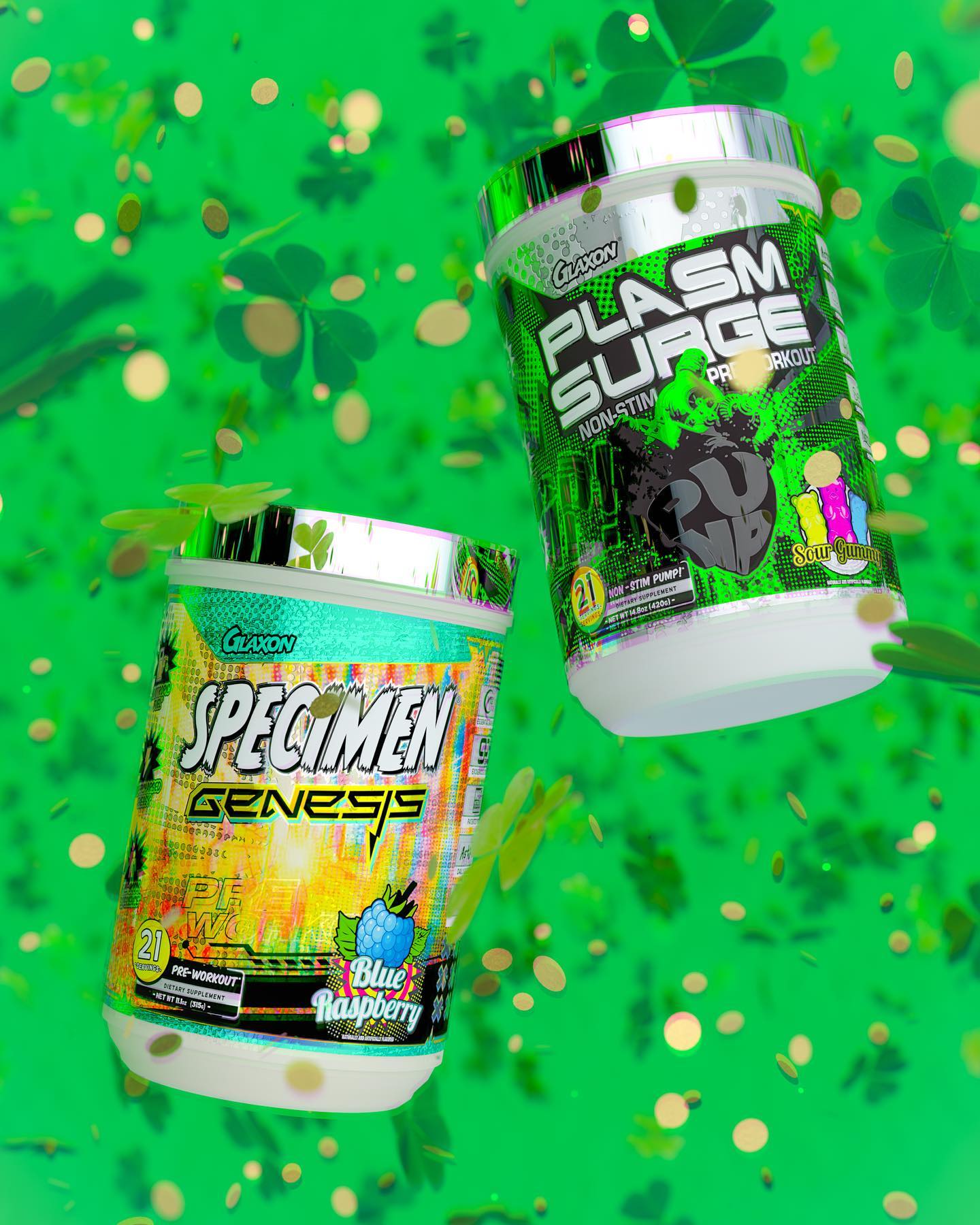
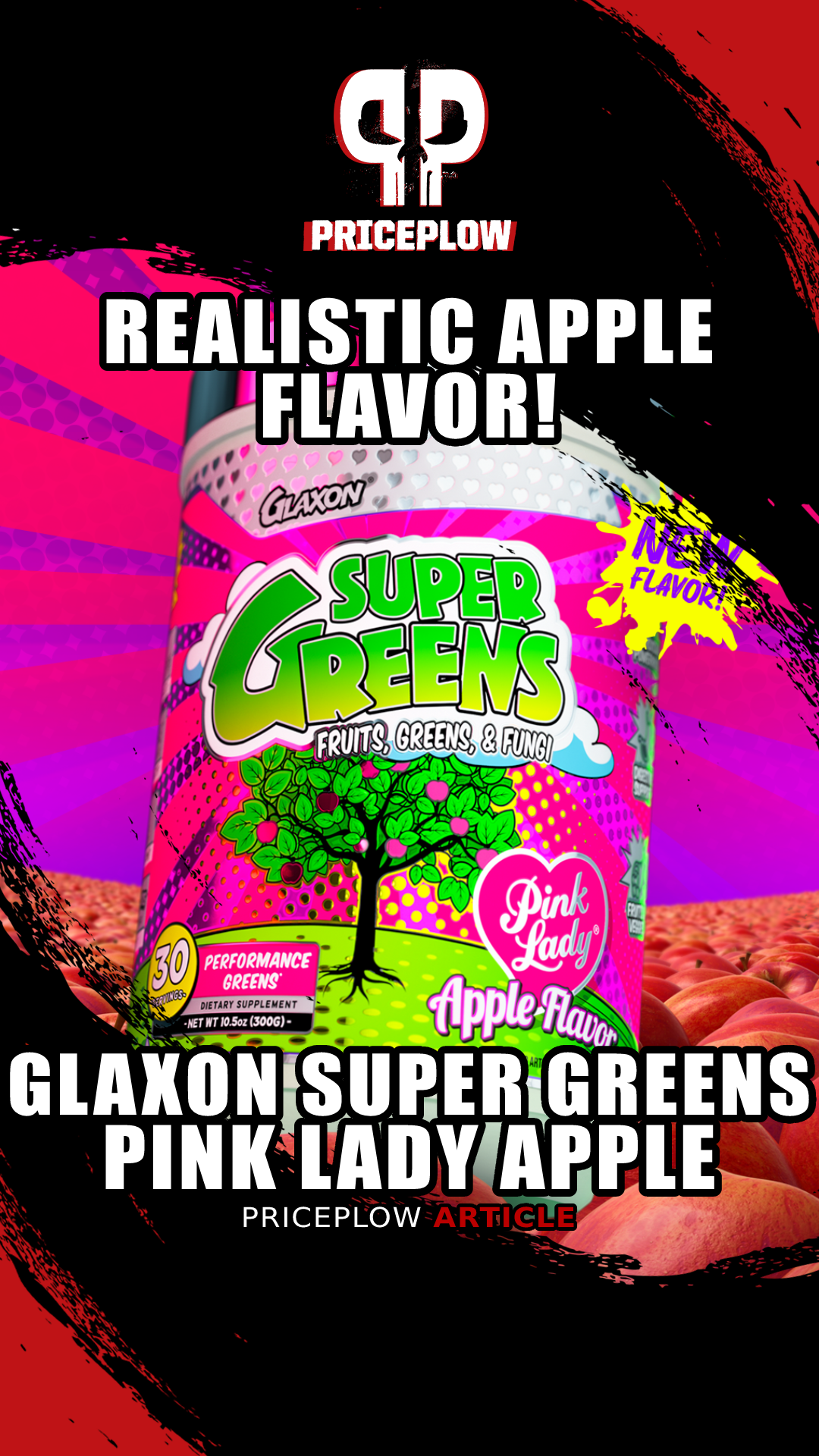
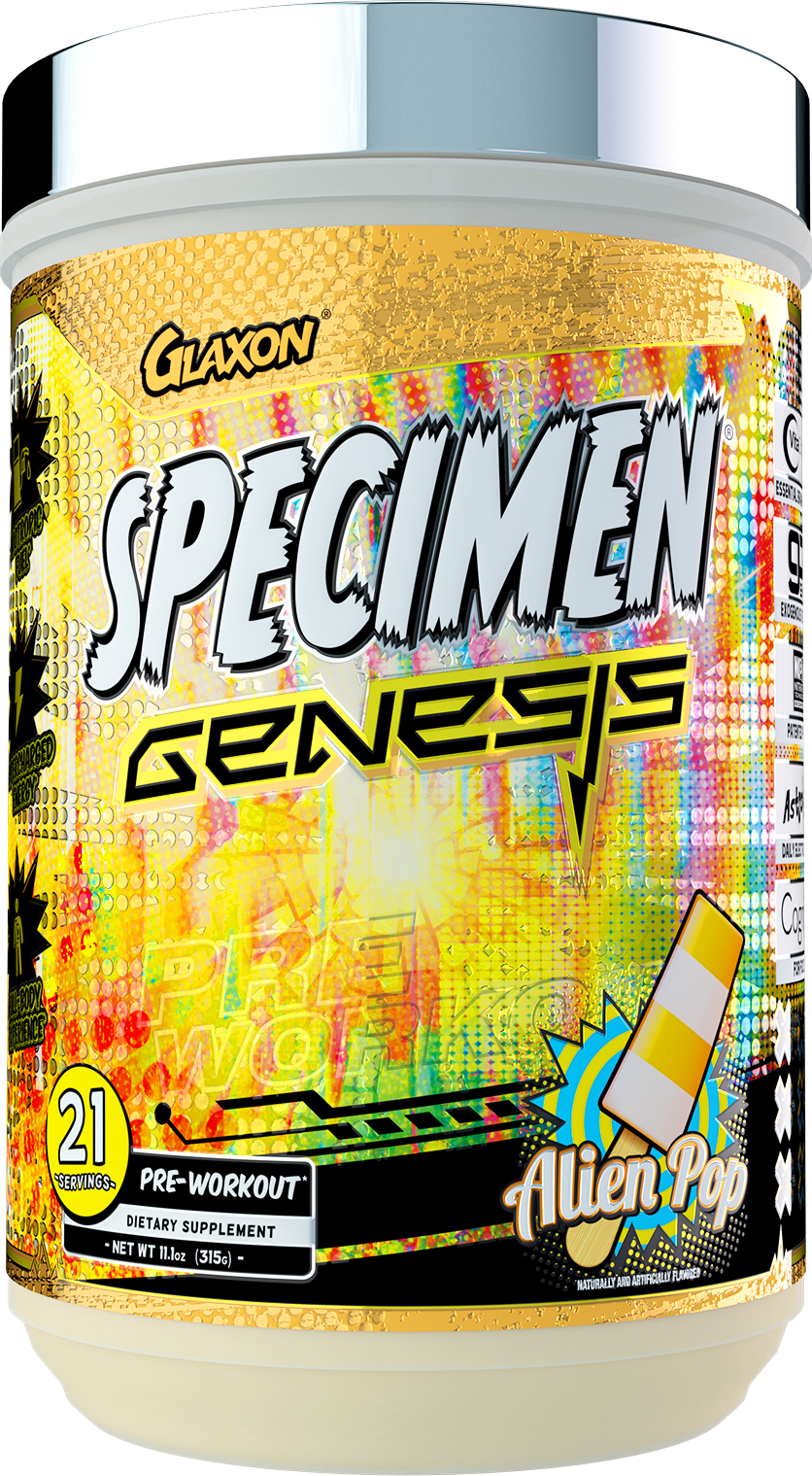
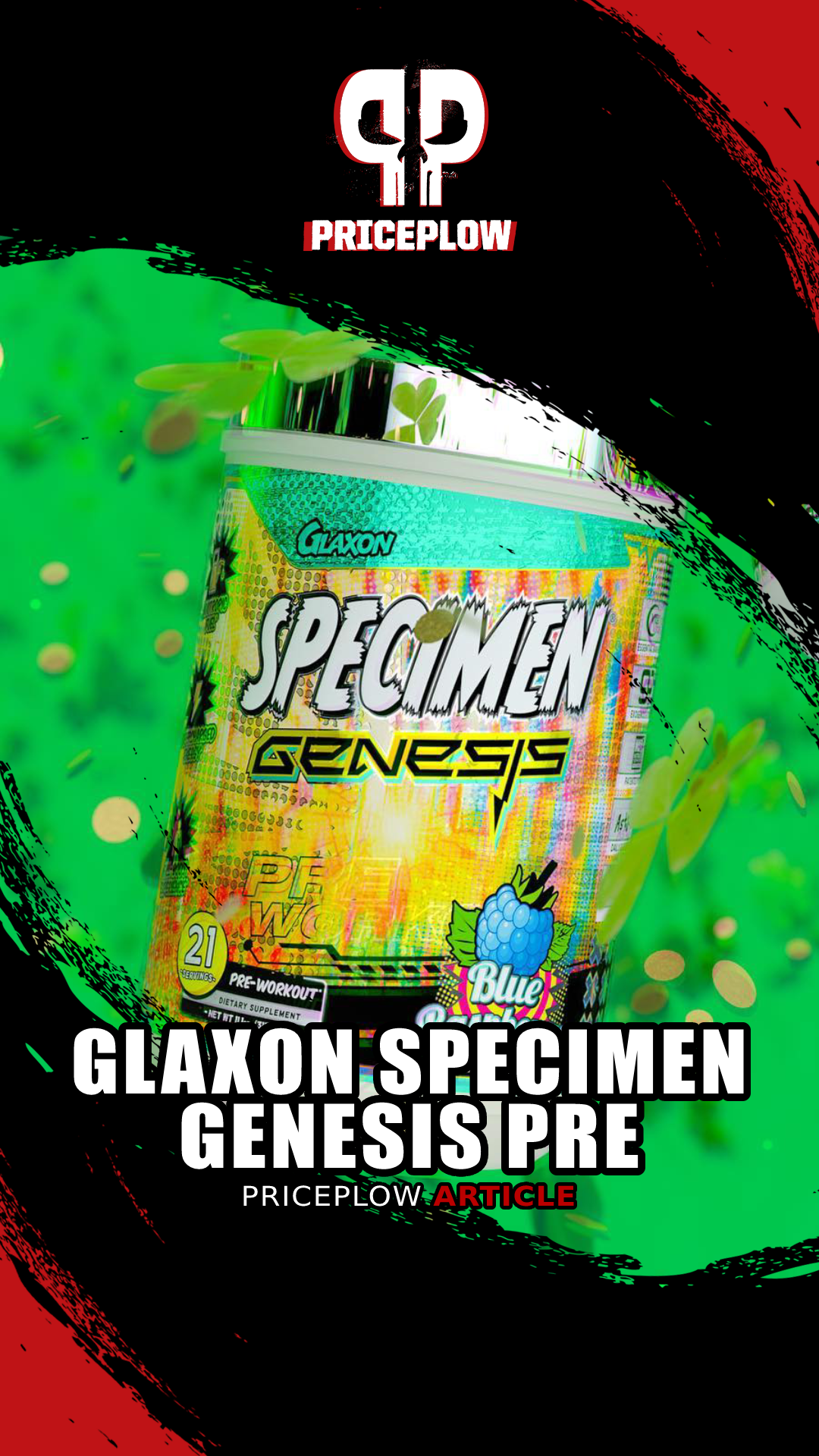


Comments and Discussion (Powered by the PricePlow Forum)